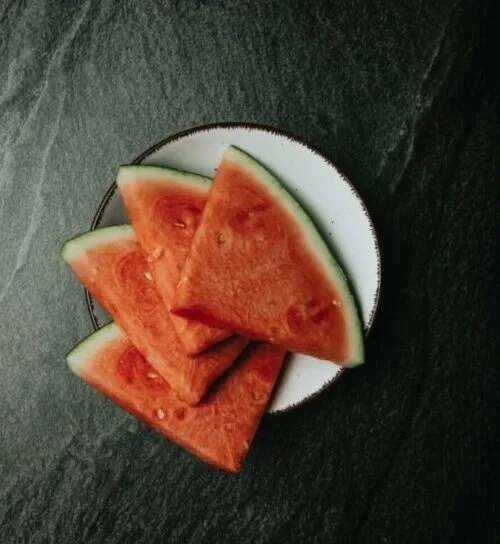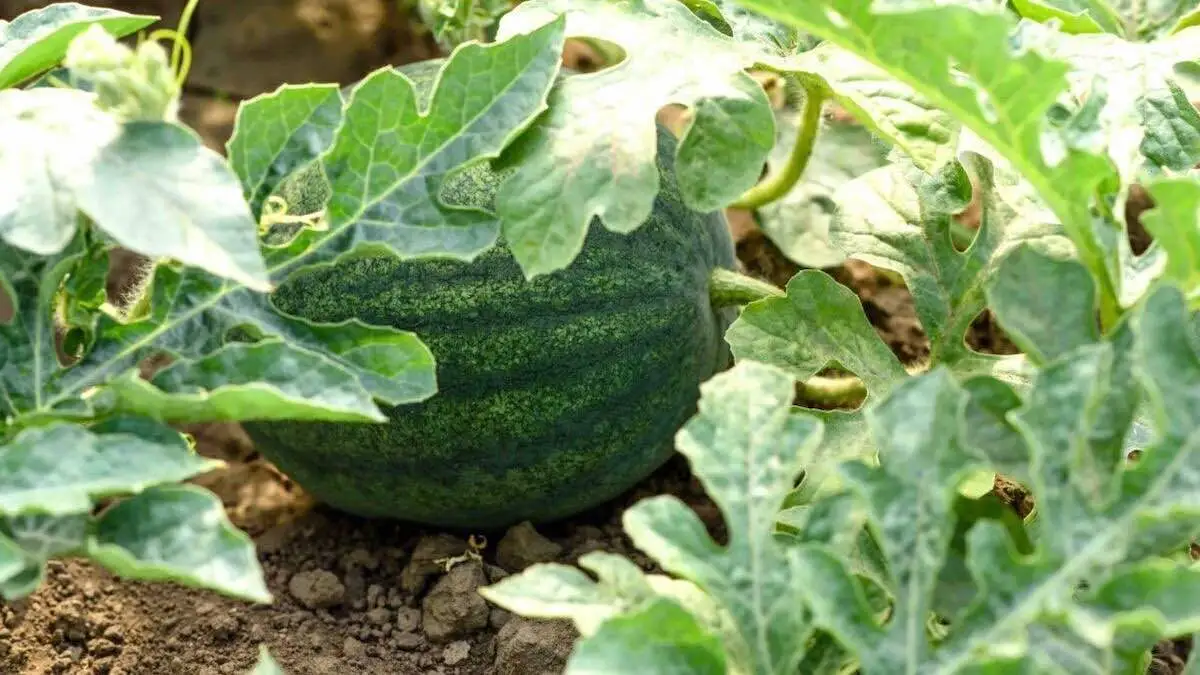Table of contents
Watermelon Growing in Australia
Watermelon growing can be fun and this guide will help you to harvest right at the start of a long hot summer in the tropics. Just slice and slurp!
Growing watermelon in the tropics is worth doing. The watermelon (Citrullus lanatus) is a fast-growing herbaceous running vine. It is believed to have originated in northeast Africa.
There are too many varieties of watermelon to name here. However, there are four basic types of watermelon: seedless, picnic, icebox, and the yellow/orange fleshed.
Watermelon Growing Season
Watermelon grows in the tropics! It also grows well in sub-tropical areas and will even grow in temperate areas (if planted in the right location).
However, the plant does not cope well with the extreme heat and humidity that comes with summer in the tropics. Consequently, in the tropics it will thrive more during the dry season.
During the ‘wet season’, fungal diseases and bugs cause the maximum grief. Consequently, it is good to harvest just before these things start causing you too much of a problem.
The time it takes for a watermelon to grow depends on the variety and growing conditions, but typically, watermelons take 70-100 days from planting to harvest.
Watermelon Growing from Seed
Watermelon seeds need warm soil to germinate, so wait until the temperatures reach at least 18.5 celsius (65F) at a depth of four inches before direct sowing.
You will need plenty of space for your watermelon vine. Plant watermelon where it will receive full sun. It will tolerate a little wind. However, watermelon prefers well-drained sandy loamy soil. In addition, it loves added manure or compost.
Time needed: 3 minutes
How to grow watermelon from seed?
- Seeds are not true to type:
Watermelon seeds are not ‘true to type’. So obtain heirloom seeds. This way you know what the resulting fruit will be.
- Build mounds:
Prepare mounds of soil and sow the seeds into them. This way the plant will drain water faster than it would in soil on flat ground. A 20cm (8in) mound is sufficient.
- Sow your seeds:
Sow seeds 2cm (1in) deep. You should space your plants approximately 30cm (12in) apart.
- Water and Sun:
Your watermelon seedlings should be in full sun. Make sure you water them thoroughly, at least once a week.
- Harvest:
Most varieties of watermelon will produce mature fruit within 100 days of planting.
Watermelon Pollination
Flowers are insect pollinated. We have heaps of native bees, so for us it is never a problem. However, if the insects aren’t doing their job, you can do it yourself by hand pollinating.
Growing Watermelons in Qld
Growing watermelons in Queensland can be a rewarding experience due to the region’s warm climate, which suits this tropical fruit.
Watermelon Growing Conditions
Watermelons thrive under specific growing conditions that maximise their growth and fruit quality. Here are the key factors to consider:
Fertilising
One of our watermelon growing tips is to apply nitrogen. So use a nitrogen based fertiliser to fertilise young watermelon plants. However, once the plant begins flowering, switch to a phosphorus and potassium based fertiliser for optimal melon production.
Watering
During the dry season, watermelons are thirsty, requiring a lot of water. However, it is said that correctly limiting water at the end of the growing season makes the fruit even sweeter.
Mulching
One of our watermelon growing tips is to mulch. Indeed mulching watermelon is useful in the tropics to control weeds. During the dry season, mulching can also help to retain moisture and save water loss through evaporation.
Watermelon Growing in Pots
Growing watermelon in pots is a practical option for gardeners with limited space. With proper care, you can enjoy a bountiful harvest of sweet, juicy melons.
Make sure you choose the right variety. Opt for smaller, compact watermelon varieties like Sugar Baby, Golden Midget, or Jubilee Bush, as these are better suited for container gardening.
Watermelon Growing Problems
Pests and Diseases
Blossom End Rot results in dark, sunken lesions on the blossom-end of the fruit. This is caused by calcium deficiency. This deficiency could be caused by a number of things. Common causes are a) extreme fluctuations in soil moisture, b) large amounts of salts, or c) a soil that is very high in nitrogen.
Harvesting
Harvesting takes place 12 to 17 weeks after planting. One indication the fruit may be ripe is that the curly green tendrils start to turn brown. Another well-known indicator is when you tap the fruit with your fingers and it returns a hollow sound.
Watermelon Fruit
Watermelons are 92 per cent water, so consuming the fruit can help one to stay hydrated. Indeed breeding has produced very sweet large fruits with tender flesh and almost no seeds.
The juicy flesh can be red, white, or yellow. Indeed the thickness of the rind also depends on the variety. The size of watermelon fruit varies from 1 to 2 kg to 20 kg or even more! In addition, the number of fruits per vine varies from 2 to up to 15.

Eating The Fruit
Our growing watermelon tips are all about producing the fruit! Watermelon is eaten fresh, most preferring it chilled. It is also juiced and can even be frozen and eaten as a popsicle.
Health Benefits of Watermelon Growing
Weight Loss
As the fruit has a high water content, it contains very few calories per volume of fruit.
Immune System
Consuming watermelon provides a refreshing boost to your immune system. Indeed it has vitamin B6, which aids in the production of red blood cells that are crucial in regulating the immune system in the body.
It also contains Vitamin C which is so useful in boosting your immune system. As a result, this will help protect the body against infections and illness.
Antioxidants
Watermelon also contains antioxidants which can help remove molecules known as free radicals from the body.
Specifically, watermelon contains a carotenoid known as lycopene which is an antioxidant that has anti-inflammatory properties. Indeed, this carotenoid has been shown to provide anti-cancer, cardiovascular, anti-aging and other health benefits.
Prebiotics
Watermelon also has prebiotic fibre which helps to promote good gut bacteria that are crucial to good health.
Growing this fruit in the tropics is well worth it, so we hope you have found our watermelon growing tips useful.
Other Tropical Fruits
- Black Sapote
- Custard Apple
- Dragon Fruit
- Grumichama
- Guava Tree
- Jaboticaba
- Kumquat Tree
- Lemonade Tree
- Mamey Sapote
- Mulberries
- Natal Plum
- Passion Fruit
- Paw Paw
- Rambutan
- Star Apple


Comments
2 responses to “Watermelon Growing in the Tropics: Everything You Need to Know”
[…] Watermelon […]
[…] Watermelon […]